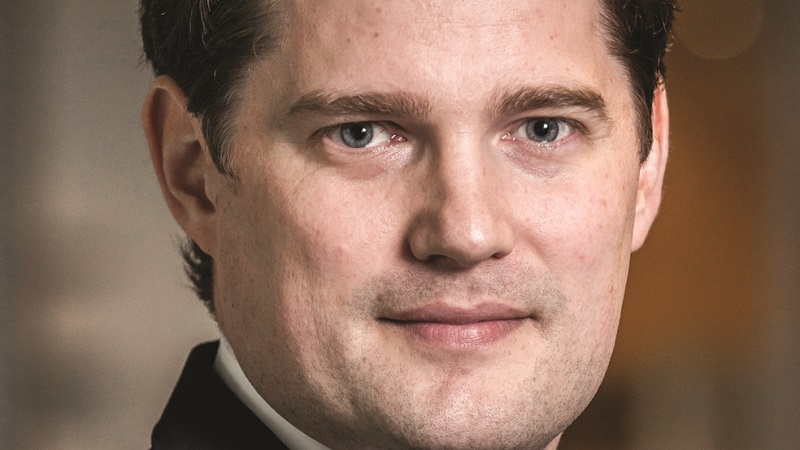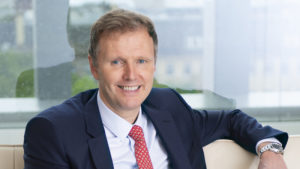A growing number of advisers and financial planners are introducing self-imposed fee caps as regulatory pressure forces a sharper focus on portfolio costs.
Research from Vanguard published at the end of 2017 found controlling investment fees is one simple way investors can improve their net returns; the simple theory being that paying less for funds leaves a bigger net return.
It said that while no quantitative factor alone can ensure outperformance, “low cost continues to be the most effective quantitative filter that has been shown, with some consistency, to improve performance”.
The paper said: “A fund’s current expense ratio [OCF] – a simple and readily available figure – has historically proved to be an effective predictor of relative future fund performance. Intuitively, this approach seems to make sense because an investor’s return is decreased by every pound spent on investment-related costs.”
Regulatory pressure
The introduction of Mifid II last year has forced asset managers to be more transparent on fees. Asset managers have been reducing fund costs, while wealth managers, IFAs and financial planners have made strides to lower the cost of portfolios to end clients.
Passive strategies have subsequently started to become the core of some portfolios to lower headline costs, but some advisers are going further and implementing self-imposed investment fee caps.
According to Tim Stubbs, investment consultant at TS Investment Strategies, he has seen countless examples of IFAs changing their portfolio construction behaviour in recent years as a direct result of cost pressure from the regulator.
“For example, some IFA firms that had previously only considered active managers for inclusion in their portfolios as a matter of policy have now started introducing a passive core to their portfolios in order to drive down the headline fees they in turn have to disclose to their end clients.”
In addition, the introduction of fee caps either on an individual fund level or at an aggregate portfolio level can add an element of discipline to the fund selection process, he adds.
Setting a cap
Red Circle Financial Planning director Darren Cooke says many advisers are conscious of fees for the underlying investments and the impact they have on a client’s portfolio, but it can be hard to set a cap on them.
“Some will have a nominal figure for cost of investment they would prefer not to breach, be that for the portfolio or any individual fund in a portfolio, and using passives is an obvious way to do that,” he says.
There are two fundamental ways to implement investment fee caps. The first is to impose cost limits at individual fund level and the second is to impose a maximum investment charge cap at portfolio level – that is the weighted average of all the funds in the portfolio, or portfolio ongoing charges figure (OCF).
According to Stubbs, the latter approach is preferable because it does not hinder individual fund selection flexibility, especially when there may be a reason to add a small number of higher cost funds to a portfolio.
This is the case for Taylor Money investment strategist Jonty Brooks who is happy to pay a fee for certain active managers he believes can add value, which tends to be in illiquid asset classes, but for more vanilla asset classes such as US equities he will go passive.
An example of something he is prepared to pay for is Time Investments Commercial Freehold which has an OCF of 1.34%. Brooks says this could be seen as expensive relative to what most funds are charging, but he argues Time offers something “completely different which is difficult to access elsewhere in the same form”.
“So we are willing to pay slightly more on the ongoing side for that,” he adds.
In the workplace pensions space, defined contribution (DC) schemes have an annual 0.75% cap which includes investment and administration costs. From the conversations Portfolio Adviser has had with industry figures, a portfolio OCF of 0.5% is a common target.
Cooke says all his portfolio costs are under 0.5% OCF. In fact, they are now down to 0.4% or less except for the income portfolio.
“For some clients I will use investment solutions that cost more than this though, if there is a specific requirement that can’t be met elsewhere or more cheaply,” he says.
Vanguard senior national development manager Andrew Surrey (pictured) agrees that anecdotally 50 basis points (bps) is a common target for wealth managers and IFAs.
“One way this can be achieved is by replacing high-cost active funds with a combination of low-cost active and low-cost index,” he says. “Lowering the cost of investing has been shown time and time again in all market conditions to increase the odds of investment success.”
Value for money
But not everyone is ready to put a hard cap on portfolio costs.
Concept Financial Planning managing director Paul Richardson says pricing was a big factor during a recent portfolio review but he does not implement investment fee caps on portfolios.
“On a very dumbed-down basis, if we think we are going to get higher volatility – and we think we are – and if we are set for more stringent returns, the thing you can control is the price you pay for a fund,” he says.
Richardson adds Concept recently sold out of SEI and bought the Vanguard Global Balanced fund which it blends with the Vanguard Lifestrategy. Portfolios are now running between 0.32% and 0.52% OCF.
He says the introduction of Mifid II has been positive from a transparency perspective. “Why have fund managers got away with saying, ‘That’s our price for the AMC’. Why did they not reveal all costs right at the beginning? What is there to hide? If you can deliver value, deliver it.”
But he’s keen to point out it is not a race to the bottom.
He adds: “I always say to clients I don’t have an issue paying 5% for a fund on an ongoing basis if that fund manager could deliver me 20%. But if I am going to get an equity return of 5% why would I want to pay out 1.5%? Maybe I could deliver that 5% and only pay 0.25%, 0.3%, 0.6%?”
Scale is the name of the game
But is it possible to haggle fund groups down on their fund prices? It all comes down to scale, says Stubbs.
“In this regard, the key platforms are very good at providing access to professional share classes through being incentivised to do the wrangling on behalf of investors and advisers,” he adds. “That is, the transparency and open architecture of many competitive investment platforms is forcing all fund management players to raise their game.”
Canaccord Genuity Wealth Management (CGWM) deputy chief investment officer Justin Oliver says CGWM has not gone as far as implementing fee cap but is looking closely at the OCFs of models and looking to reduce this in part by liaising with fund managers it has significant assets with to get share classes down.
Oliver says CGWM’s portfolios are taking a barbell effect with index vehicles at one end costing about 10bps and funds with high active share at the other.
“It is forcing us to move away from other vehicles,” he says. “Managers have to justify the fee they are charging us.”
A “big pain in the arse” for Oliver is the fact that under Mifid II rules performance fees count as part of the OCF. This he says makes funds look more expensive which in turn makes it harder to include them in portfolios.
“It [Mifid II] has been messy quite frankly and has not helped us or our clients.”







